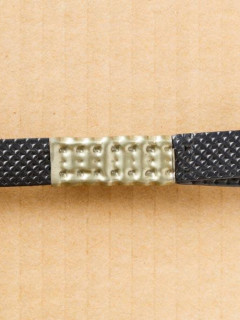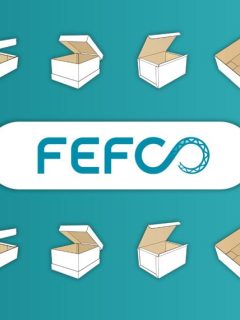You open a document on your computer, press ‘print’ and a few seconds later your document magically comes out of the printer. Sounds simple, although there is a lot of technology behind it. In this article we look at the three most commonly used systems: laser, inkjet and thermal printing. What are the advantages of each technique and what type of labels or paper do you need?
1. Thermal printing
► The thermal printer: how does it work?
Thermal printing uses heat to make a print on paper. Thermal printers are mainly used to make receipts, product labels, shipping labels, etc. In thermal printing, there are 2 types of techniques
| Direct thermal printing |
Thermal transfer printing |
|
Here, the paper or labels used are coated with a special chemical layer. When this comes into contact with the hot print head, a coloured chemical reaction is generated, leaving a black print on the material used. As a result, the print dries immediately. |
The heat from the print head melts and vaporises the colours on the ink ribbon, which then solidify on contact with the paper. This technique guarantees an unlimited printing time and is mainly used for the production of barcodes or for coding products, boxes, etc. |
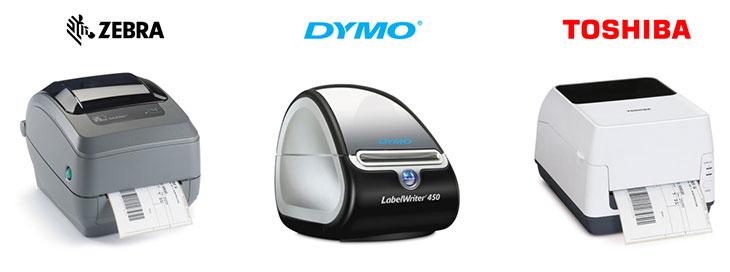
► What are the advantages of thermal printing?
- Compact: as they are small and light, you can easily take the printers with you wherever you go, saving a lot of space on your desk or packing station.
- Easy to maintain : they don’t need ink or toner cartridges.
- High printing capacity : they print a very high number of labels per minute.
Le bisphénol A CAS no 80-05-7 EG no 201-245-8, ne peut plus être mis sur le marché après le 2 janvier 2020 en concentrations égales ou supérieures à 0,02 % en poids (200 mg/kg). Vous trouverez de plus amples informations à ce sujet dans ce règlement de la Commission européenne (2016/2235).
2. Laser printing
► The laser printer: how does it work?
Contrairement à l’imprimante jet d’encre (voir ci-dessous), l’imprimante laser n’utilise pas d’encre, mais du toner. Le toner est une sorte de poudre qui est appliquée et fondue sur le papier. Le résultat final est une impression plastique sur papier. Cela rend votre impression plus résistante à l’humidité et à la pluie, pas étonnant donc que les imprimantes laser soient souvent utilisées par les boutiques en ligne pour imprimer les étiquettes d’expédition.
Le nom « imprimante laser » vient du fait que ces imprimantes utilisaient à l’origine de la lumière laser. De nos jours, la lumière LED est également utilisée à cette fin. Le document ou la photo que vous souhaitez imprimer est projeté sur le tambour de l’imprimante avec le laser. Le tambour roule ensuite sur le papier et transfère le toner aux endroits exclusivement éclairés par le laser. Le toner est ensuite chauffé afin qu’il adhère fermement au papier.
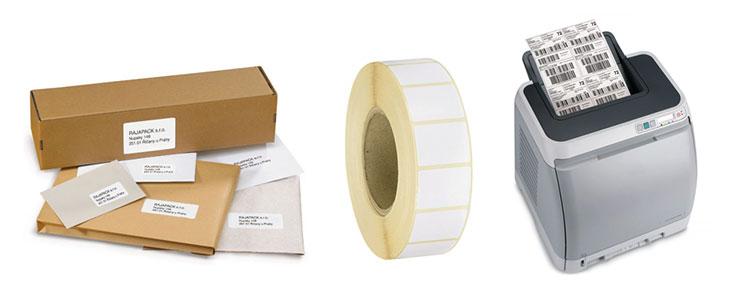
► What are the advantages of laser printing?
- Fast: the printing speed is higher than that of an inkjet printer.
- High quality: prints are waterproof and dry immediately after printing. This type of printing lasts longer and can be applied in a more targeted manner.
- Advantageous: printing with toner is cheaper than printing with ink (because the cartridge will have to be replaced less often).
- All RAJA labels are suitable for laser printers, which is useful when you need to print larger quantities per day.
- Some special shipping labelsthis is a 2-in-1 solution: you print the invoice or delivery note with the shipping note or return ticket(suitable for laser and inkjet).
- For difficult transport situations, there are heavy-duty labelsfor difficult transport situations, there is a range of printers that can withstand all weather conditions and outdoor use (laser-safe)[/su_box]
3. Inkjet printing
► The inkjet printer: how does it work?
An inkjet printer is the cheapest option, very useful for the average household or small business.With this type of printer, small drops of ink are sprayed onto the paper.It is electric shocks that ensure the ink from the cartridge settles in the right place on the paper.Depending on whether the droplets are close together or not, in colour or black and white, the colours on the paper can be light, dark or even mixed.
Please note that with this technique, the ink does not adhere as firmly to the paper.If the ink comes into contact with water, the colours can mix.It is also best to avoid printing on both sides of the paper, as this can affect the quality of the print.
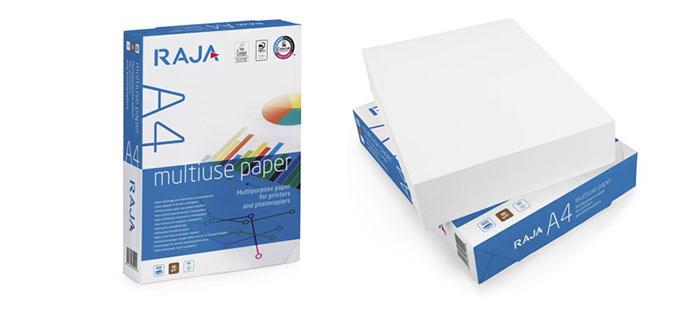
► What are the advantages of inkjet printing?
- Economical: the printer does not have to be switched on all the time.
- Versatile: best suited for printing photos (depending on the type of inkjet printer you buy).
- Cheaper: this printer is usually the cheapest, but remember that you need to replace ink cartridges more often.













